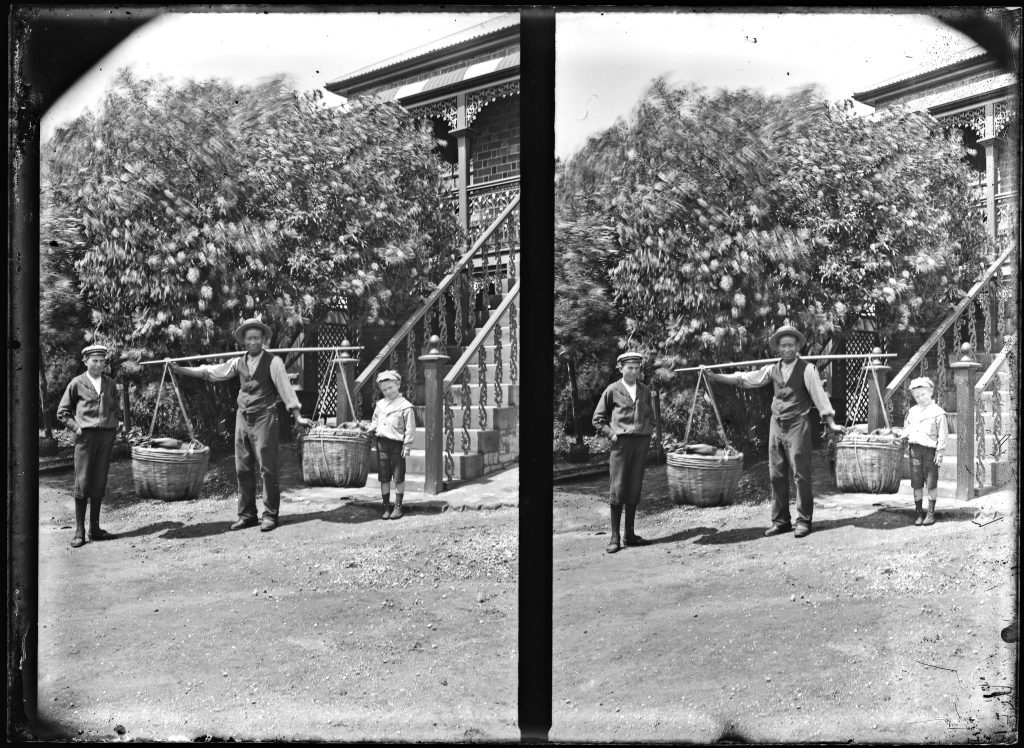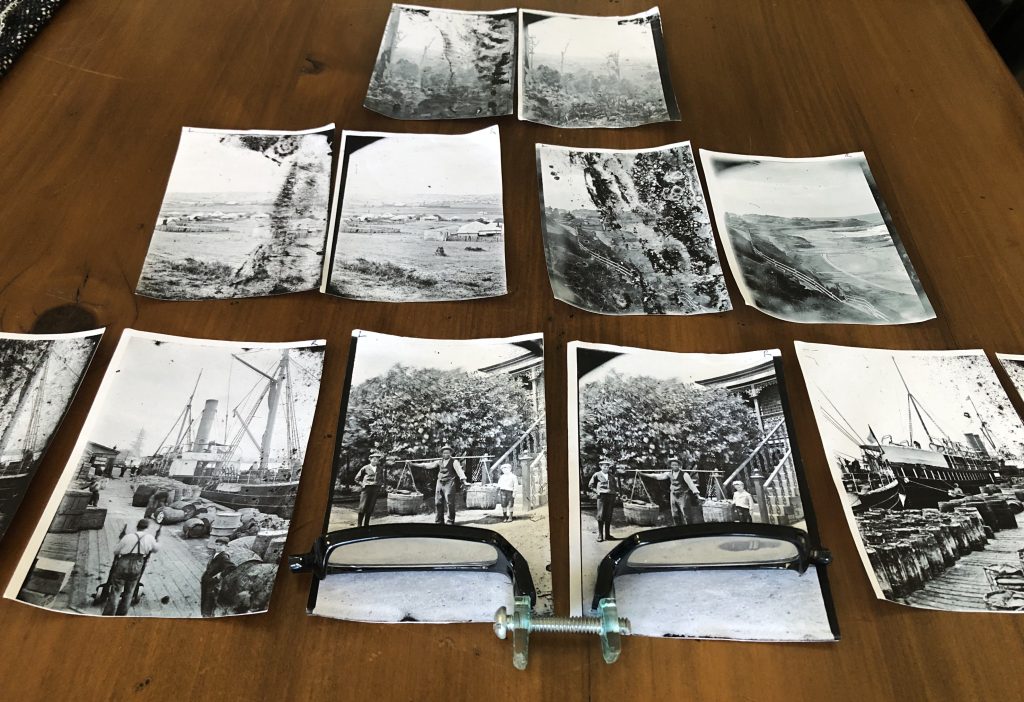Thanks to Ralph Snowball’s extensive archive of glass plate negatives, we have thousands of clear views into our city’s past. But Snowball also dabbled in one of the photographic crazes of the 19th century, stereoscopy.
Our perception of a three-dimensional world comes from having two eyes, each seeing the same scene from a slightly different point. Our brain combines the images to give us sense of how close or far away objects are. Stereoscopic photography mimics this by using a camera with two horizontally separated lenses, that capture two images of a scene. Prints can then be mounted on a stereoscopic viewer, a goggle like apparatus that uses lens to combine the two images to give us the impression of a three-dimensional view.
Newcastle University’s Living Histories collection contains eight stereoscopic images by Snowball, including views of New Lambton, Newcastle harbour and the beach. The negatives have varying degrees of damage, with the best-preserved example being of a Chinese market garden vendor at the foot of the steps of Snowball’s home in Clarence Road, New Lambton.
Not many people have an antique stereoscopic viewer lying around the house, but YouTube, that modern purveyor of DIY solutions has an alternative. A video (https://youtu.be/jIh8zetHB9E) demonstrates how to create your own viewer using a few tools, cheap plastic reading glasses from a bargain store, and a small threaded bolt.
I achieved best viewing results when photos were printed with each image 7cm wide. I placed the images on a well-lit horizontal surface with a gap of a few centimetres between them. With the connecting bolt of the glasses against my nose, and at a viewing distance of about 40cm, I used my left eye to focus on the left-hand image and slowly moved the right image inwards until the two images merged. It can take a while to master the technique, but when you do, the effect is both startling and enchanting to suddenly see history in 3D.


The article above was first published in the August 2023 edition of The Local.
Additional Information
The Living Histories site at the University of Newcastle contains eight stereoscopic photographs by Ralph Snowball.
Greg Ray, on his Photo Time Tunnel website, has written several excellent blog articles on stereoscopic photography:
